The Atapuerca Memory is an initiative of the Atapuerca Research Team (EIA) aimed at safeguarding, preserving, and disseminating the history and identity of the research project carried out at the Atapuerca mountain range sites. For nearly 50 years, the project has recovered a vast amount of information about human evolution, becoming an international benchmark. It can be said that the entire history of human evolution in the European continent is preserved in the Atapuerca mountain range. The fossils found at these sites allow the study of all the hominid species that inhabited Europe from one and a half million years ago to the present day.
The Atapuerca Memory is housed at the Emiliano Aguirre Research Center (CIEA) of the Atapuerca Foundation.
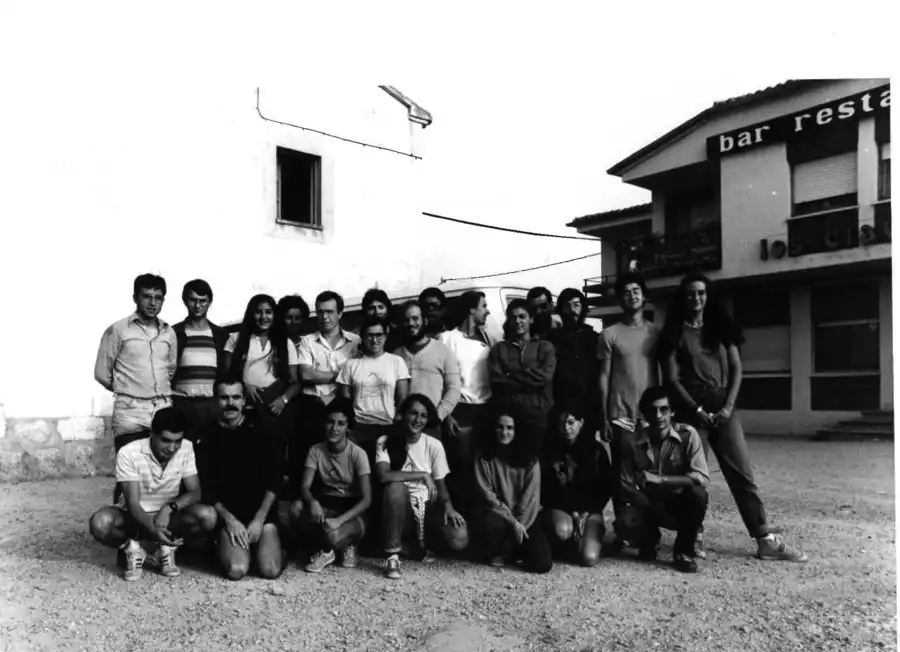 Part of the Atapuerca Research Team during the 1984 excavation campaign. Photo: Photographic archive of José María Bermúdez de Castro
Part of the Atapuerca Research Team during the 1984 excavation campaign. Photo: Photographic archive of José María Bermúdez de Castro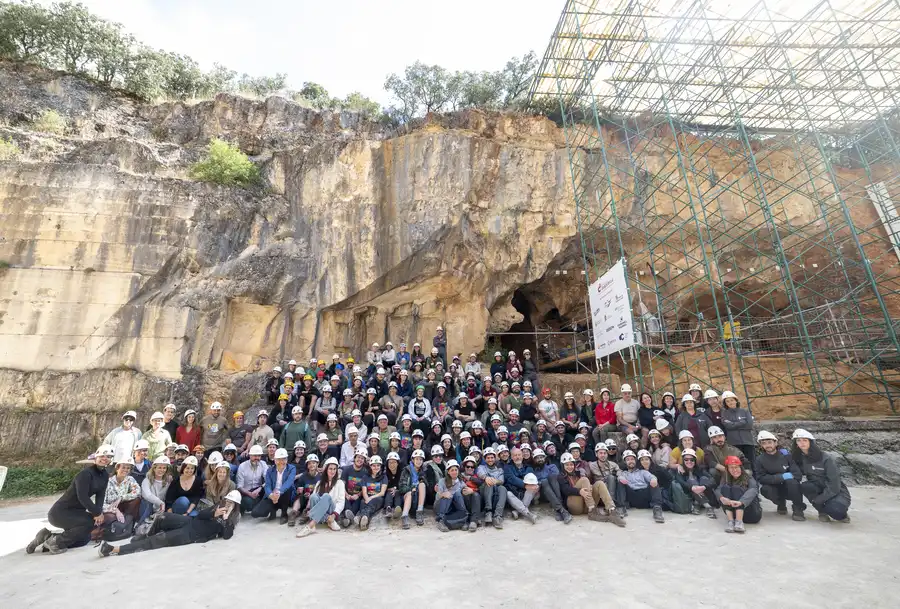 Part of the Atapuerca Research Team during the 2025 excavation campaign. Photo: Susana Santamaría / Atapuerca Foundation
Part of the Atapuerca Research Team during the 2025 excavation campaign. Photo: Susana Santamaría / Atapuerca Foundation
Atapuerca: Work and Recognized Excellence
The documentary legacy of the Atapuerca Memory is tied to the sites of the Atapuerca mountain range, declared a Site of Cultural Interest in 1991 and a UNESCO World Heritage Site in 2000. Its heritage value is linked to the historical process of archaeological research in the Sierra and contributes to the enrichment of the cultural heritage of Castile and León.
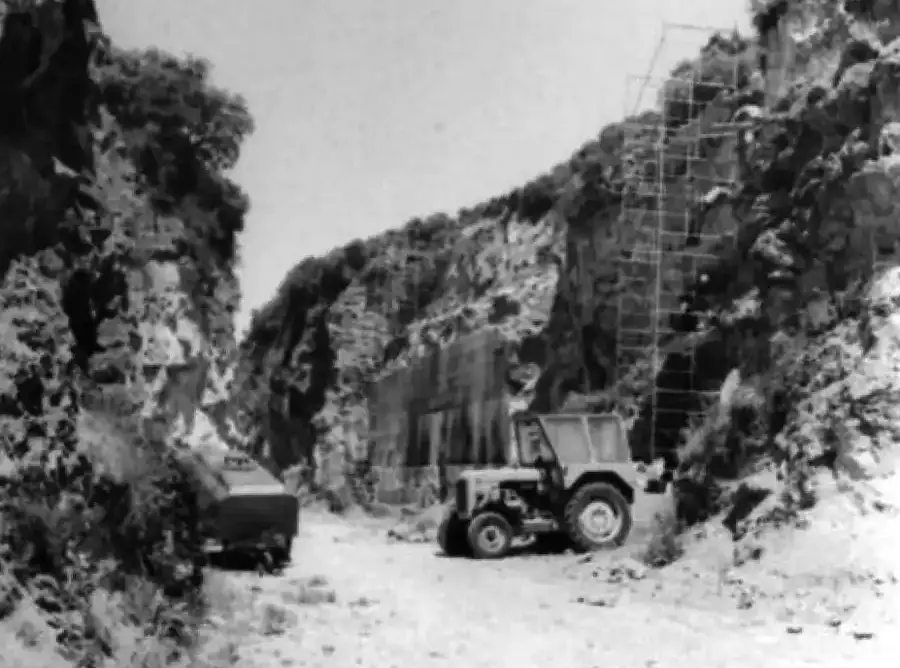 Railway Trench of the Atapuerca mountain range in the 1980s. Photo: Photographic archive of José María Bermúdez de Castro
Railway Trench of the Atapuerca mountain range in the 1980s. Photo: Photographic archive of José María Bermúdez de Castro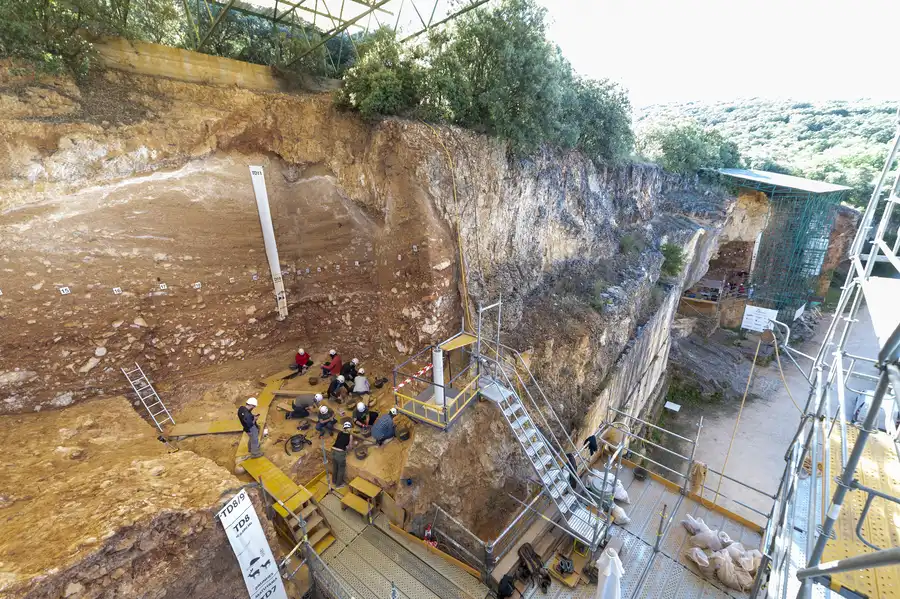 Gran Dolina and Galería sites in the Railway Trench of the Atapuerca mountain range in 2024. Photo: Susana Santamaría / Atapuerca Foundation
Gran Dolina and Galería sites in the Railway Trench of the Atapuerca mountain range in 2024. Photo: Susana Santamaría / Atapuerca Foundation
The Atapuerca Memory has its own key figures and brings together an exceptional pool of researchers in fields such as biology, paleontology, human evolution, geology, and archaeology. Its foundation lies in the figure of Professor Emiliano Aguirre (1925–2021), who launched the project in 1976 and formed the EIA.
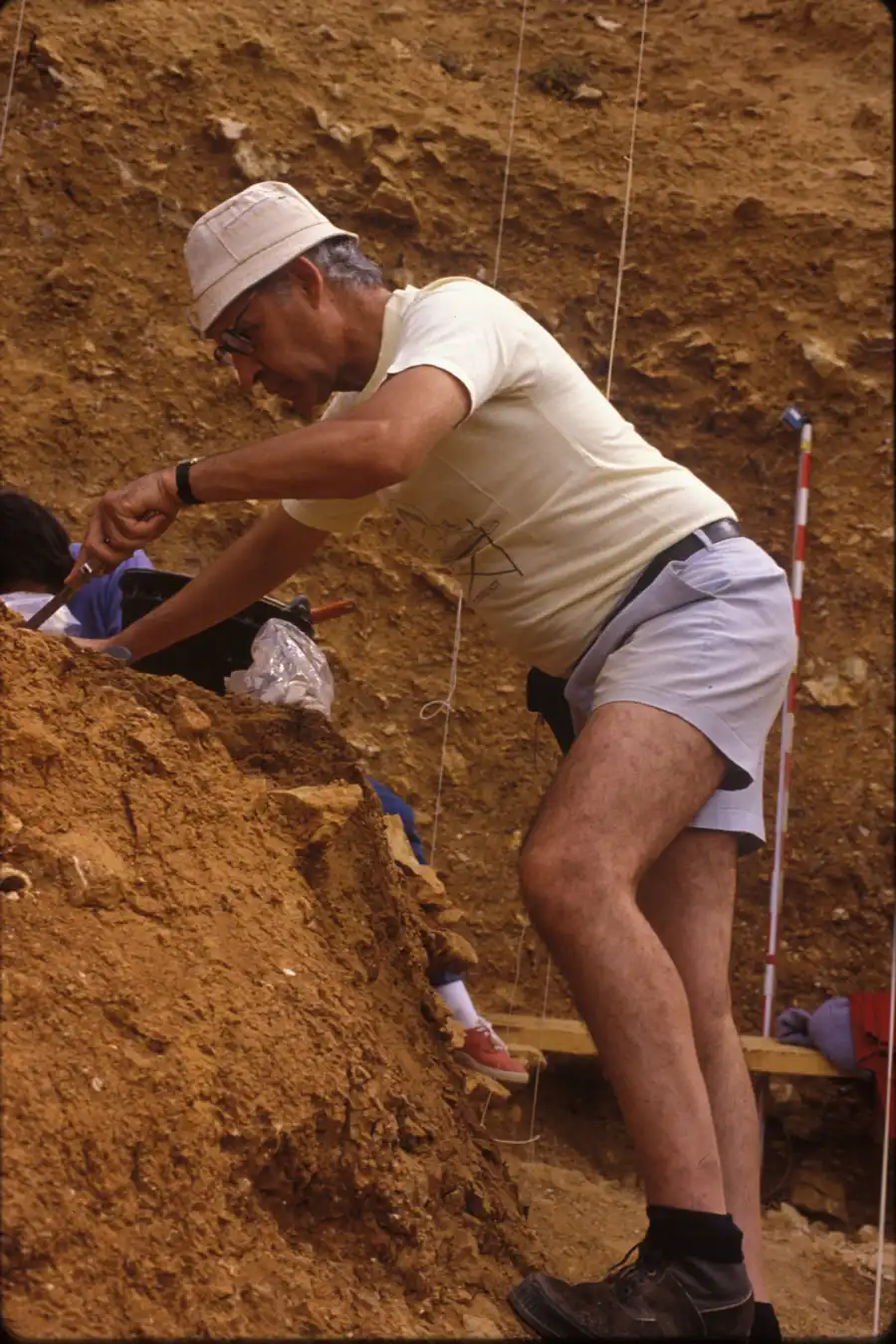 Emiliano Aguirre excavating in the Atapuerca mountain range in the 1980s. Photo: José María Bermúdez de Castro
Emiliano Aguirre excavating in the Atapuerca mountain range in the 1980s. Photo: José María Bermúdez de Castro
In 1997, the EIA was awarded the Prince of Asturias Award for Scientific and Technical Research, highlighting “the exemplary integration of several groups in a multidisciplinary project founded by Emiliano Aguirre.” It was also noted that the Atapuerca excavations represented a “School of Quaternary Studies” at a global level, serving as a model for other Pleistocene sites.
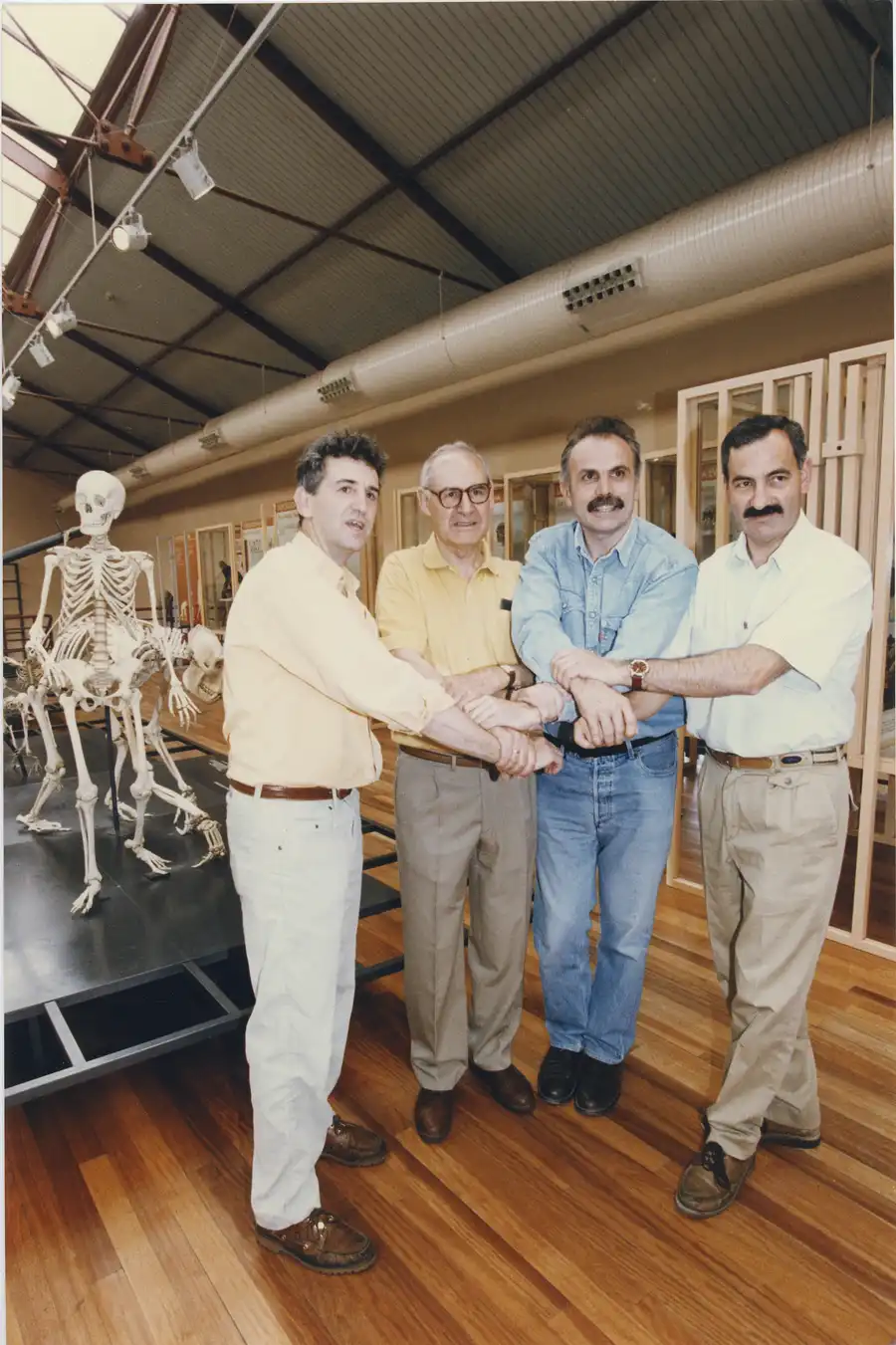 Juan Luis Arsuaga, Emiliano Aguirre, Eudald Carbonell, and José María Bermúdez de Castro at the National Museum of Natural Sciences in Madrid, in 1997, after learning of the Prince of Asturias Award. Photo: J.M. Barroso / ABC Archive
Juan Luis Arsuaga, Emiliano Aguirre, Eudald Carbonell, and José María Bermúdez de Castro at the National Museum of Natural Sciences in Madrid, in 1997, after learning of the Prince of Asturias Award. Photo: J.M. Barroso / ABC Archive
The documentary collection of Emiliano Aguirre is complemented by that of the three co-directors who took over after his retirement in 1990: Eudald Carbonell, José María Bermúdez de Castro, and Juan Luis Arsuaga. The documentary collections of Carbonell and Bermúdez de Castro have already been deposited at the CIEA since February 2025 for preservation and are awaiting cataloguing.
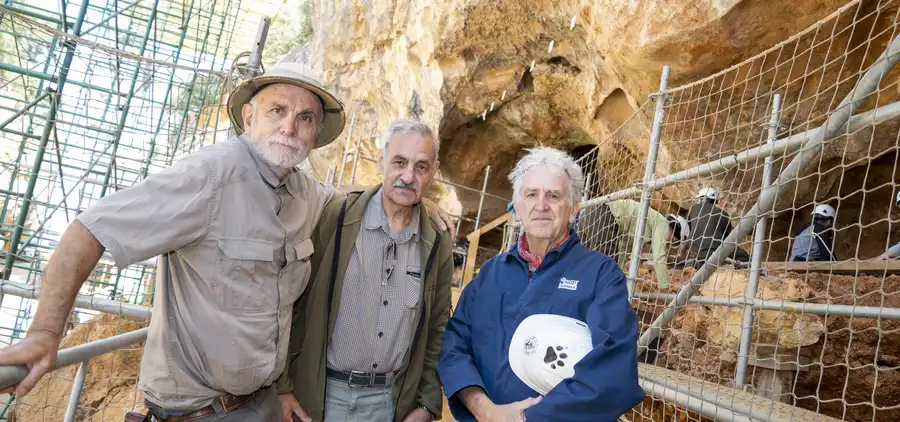
Eudald Carbonell, José María Bermúdez de Castro, and Juan Luis Arsuaga during the 2002 excavation campaign in the Atapuerca mountain range. Photo: Susana Santamaría / Atapuerca Foundation